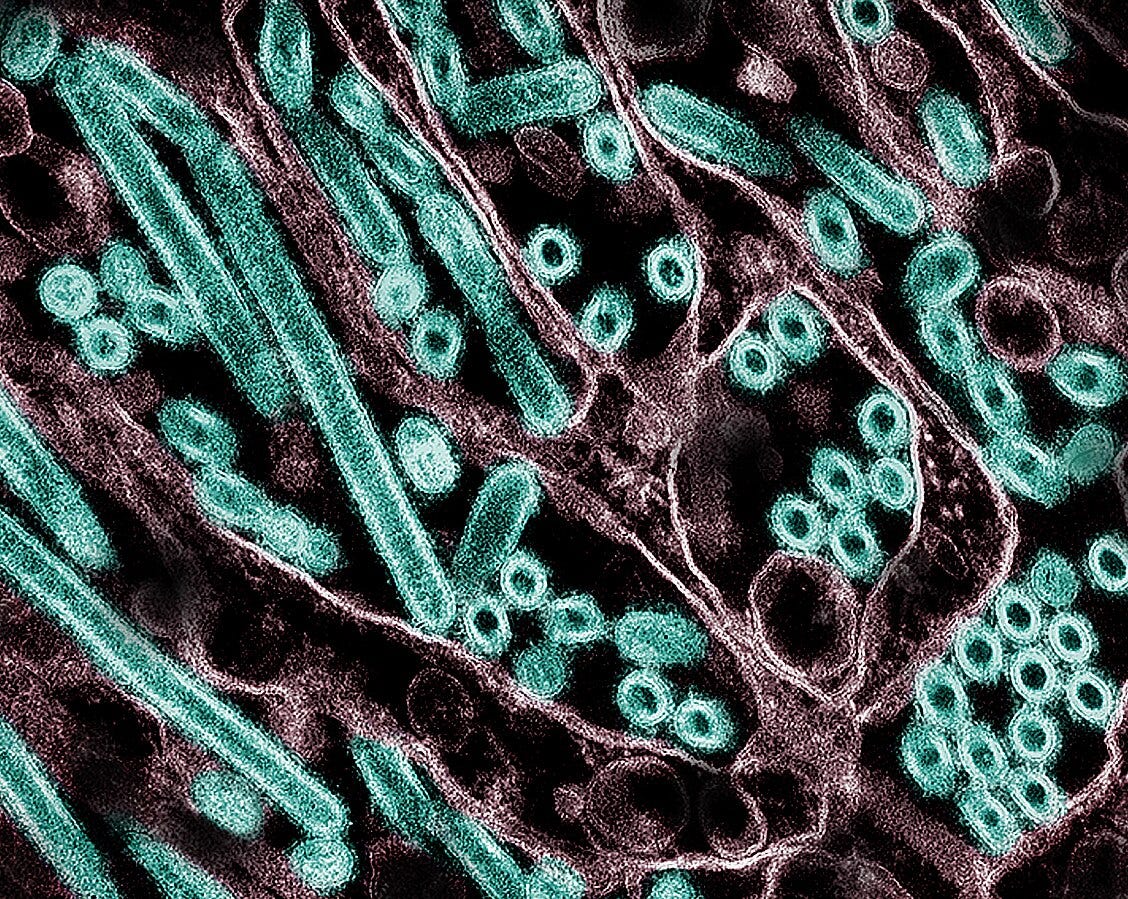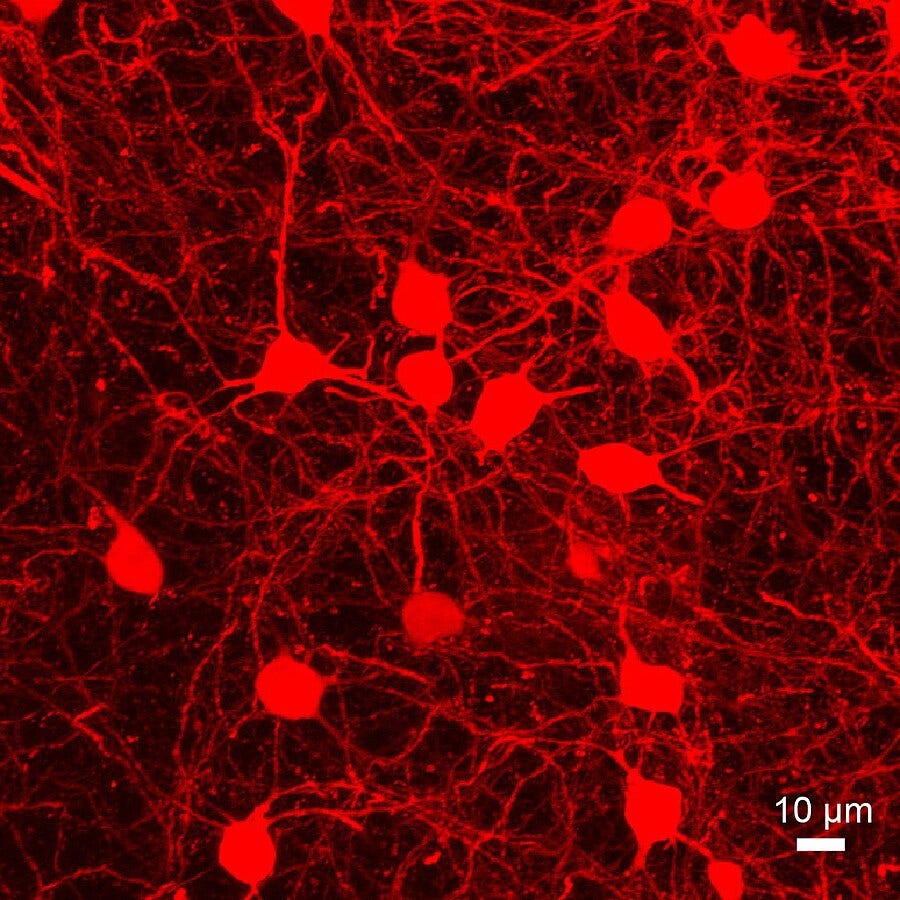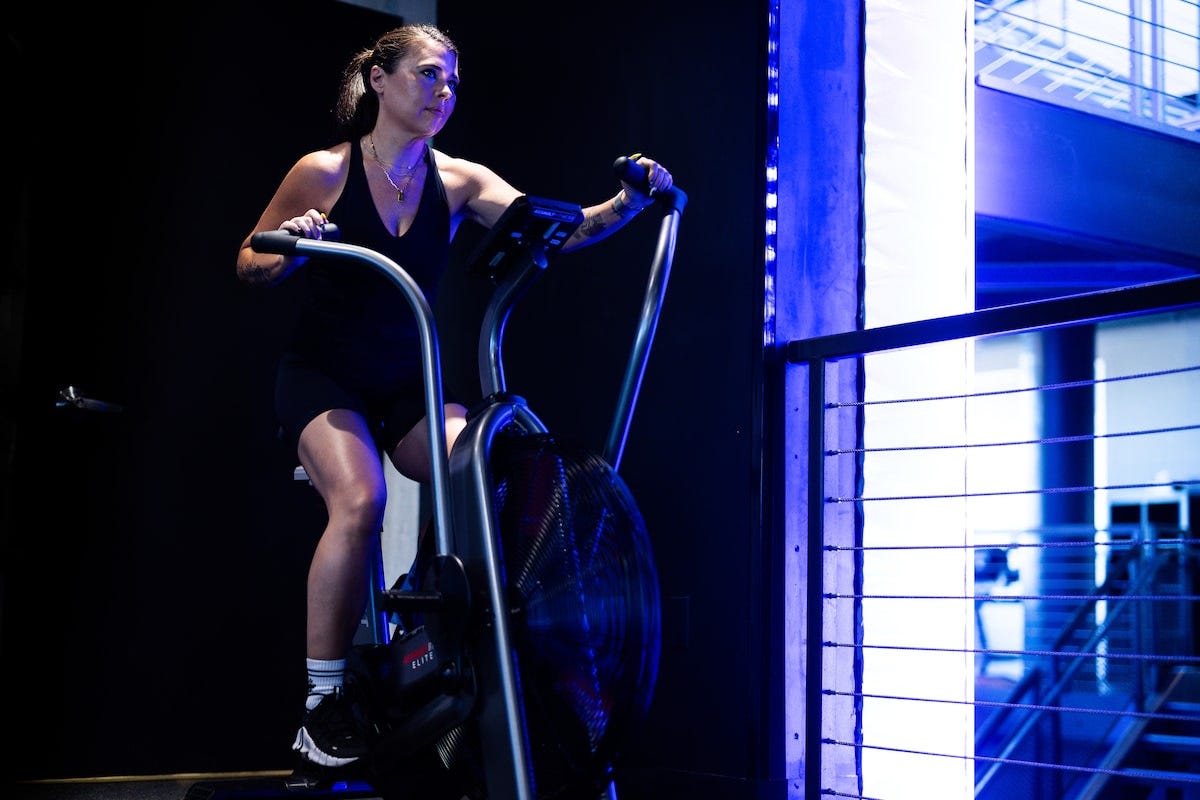Sci-Ed Update 334
New role for ketone bodies, fat cell memory, A&P student accommodations, Patrick & Lauren's alternative office hours, EEG scalp tattoos, new brain signal type, exercise myths, bird-flu concern, more!
A First-of-Its-Kind Signal Has Been Detected in Human Brains
Scientists have identified a unique form of cell messaging occurring in the human brain, revealing just how much we still have to learn about its mysterious inner workings.
Excitingly, the discovery hints that our brains might be even more powerful units of computation than we realized.
In 2020, researchers from institutes in Germany and Greece reported a mechanism in the brain's outer cortical cells that produces a novel 'graded' signal all on its own, one that could provide individual neurons with another way to carry out their logical functions.
Kevin Patton comment→ We explore this discovery in Episode 139 of The A&P Professor podcast.
Read more→ AandP.info/cyn
Temporary scalp tattoo can be used to record brain activity

Analysing brainwaves could be made easier by printing a temporary tattoo onto a person’s head.
Electroencephalography (EEG) is a way of measuring electrical activity in the brain via electrodes placed on the scalp... Because people’s skulls vary in size and shape, technicians have to spend considerable amounts of time measuring and marking the scalp to get accurate readings. A gel helps the electrodes detect brain signals, but it stops working well as it dries. The cables that connect to the electrodes can also cause discomfort and may interfere with subtle electric signals.
Nanshu Lu at the University of Texas at Austin and her team want to avoid these issues by printing a temporary tattoo onto the subject’s scalp. The ink for the tattoo is made of two polymers called poly(3,4-ethylenedioxythiophene) (PEDOT) and polystyrene sulfonate (PSS). It is highly conductive and durable and doesn’t irritate the skin.
Read more→ AandP.info/zpa
With Card Games, Coloring Sessions and ‘Hang Out Times,’ Professors Rethink Office Hours

Office hours for Patrick Cafferty’s biology classes are anything but traditional. Sometimes, students will go on runs with Cafferty, who is a teaching professor at Emory University. Other times, they’ll meet for coloring sessions or use chalk to draw anatomical diagrams on the sidewalk outside the medical school on campus.
This year, the office hours became a time for students to play games together. They’ve played Exploding Kittens and Unstoppable Unicorns, both strategic card games. Cafferty even got a small grant recently to purchase more games to play with his students. The sessions are scheduled to last just an hour, but Mcafferty usually has to usher his students out after an hour and a half or an hour and 45 minutes.
Cafferty began offering what he calls “alternative office hours” shortly before the pandemic. He started off with the running sessions — or “active office hours” — after helping some students train for a half or full marathon as a faculty in residence. Once the pandemic started, Cafferty found that many students enjoyed the calming togetherness of coloring while on a shared Zoom call. He downloaded outlines of biology diagrams and sent them to students to print on their own.
…Last year, Lauren Sloane, a biology professor at the State University of New York at Delhi, took her students outside in the snow, where they used colored water to draw diagrams of what they were learning in class. When it hadn’t snowed in a while, she gave them sidewalk chalk, and if the weather was bad, they’d come into a large classroom and draw on poster paper.
Giving them a fun, nontraditional way to learn the content motivated students to engage with the material, Sloane says. She also found that students began teaching each other, which helped them learn better as well.
“I was there to watch them and guide them and ask them questions because if I just tell them what to do, they're not necessarily going to learn it,” Sloane says. “But if they are working with each other to try and work through things — and asking questions about this or how does this work — then they got the concept and they had fun with it because it was in the snow.”
Kevin Patton comment→ I’m always gathering new ideas from my friends Patrick and Lauren!
Read more→ AandP/6ij
Exercising to lose weight? Science says it rarely works.
When Herman Pontzer began studying the metabolisms of the Hadza, a tribe of modern hunter-gatherers in Tanzania, for a 2012 study, he assumed they’d be incinerating calories like a furnace. They were in almost constant motion — walking, jogging, tugging and lifting all day long.
But when he and his colleagues compared the Hadza’s typical daily energy expenditure, controlled for body size, with that of your average couch potato office worker back in the United States, the totals were nearly identical.
“That was unexpected,” said Pontzer, now an evolutionary anthropologist at Duke University and author of the 2021 book “Burn,” about the science of metabolism.
The findings were so surprising that he wound up developing a new theory for how we use calories — called the “constrained total energy expenditure model.” It suggests that our bodies and brains can rejigger how many calories we burn — recalibrating within a narrow range — by slowing or shutting down some biological operations if we’re especially active, keeping our total calorie burn at the same level.
Read more→ AandP.info/k0o
Why 10,000 steps a day isn’t the secret to better health
A few years ago, my workplace had a competition where we all got fitness trackers, formed teams, and raced to accumulate the most overall steps. Many people were taken aback when they found they weren’t easily reaching the coveted 10,000 strides—a number wellness apps promote as a standard for good, even optimal, health. I have studied the role that physical activity plays in preventing disease for a long time, and it made me wonder: Where did that number come from?
It turns that in 1965, a Japanese company called Yamasa Clock created a personal-fitness pedometer called the Manpo-kei, which means “10,000 steps meter.” The Japanese character for 10,000 looks almost like a person walking or running, which is likely how the gadget-maker landed on the name—and the number. It’s also an easy goal to remember, especially when accompanied by a sketch of a person who’s literally walking.
But that benchmark wasn’t based on any scientific evidence. Even today, few studies have looked at the connection between steps taken and overall health. After my work competition, I decided to do my own research. I found that in older women, half that number of footfalls—4,400—still lowered their risk of death, and that the benefit tapered off at around 7,500. There’s still more work to do with different age group, but it’s safe to say that 10,000 is no magic number.
Read more→ AandP.info/pee
Muscling Through Barriers: The A&P Student Accommodations Handbook Unveiled
In Episode 151 of The A&P Professor podcast, host Kevin Patton is joined by Jennifer Stokes, Rachel Hopp, and Abbey Breckling to discuss the Anatomy and Physiology Student Accommodations Handbook. This handbook released by the Human Anatomy and Physiology Society (HAPS), provides instructors with evidence-based suggestions and best practices for making A&P labs and classrooms more inclusive and accessible for all students.
Developed by a HAPS subcommittee, the handbook offers guidance on accommodating students with a wide range of needs, from physical limitations to visual or hearing impairments. The goal is to help instructors identify meaningful alternatives to standard lab protocols that promote student success. The handbook is organized by common accommodation requests and includes sections on universal design principles, making accommodations for temporary conditions, and incorporating tactile and visual aids.
The HAPS committee plans to regularly update the handbook as new strategies and technologies emerge.
0:00:00 | Introduction
0:00:48 | How It Started
0:19:33 | Blue Sky’s From Now On *
0:20:38 | You Don’t Know You Need It Until You Do
0:32:57 | Brain Break *
0:35:36 | Opportunities for Learning
0:47:33 | Show Business *
0:51:03 | Exploring the Handbook
1:02:44 | Staying Connected
* Breaks
To listen to this episode, click on the play button above ⏵ (if present) or this link→ theAPprofessor.org/podcast-episode-151.html
Why a teenager’s bird-flu infection is ringing alarm bells for scientists

In a children’s hospital in Vancouver, Canada, a teenager is in critical condition after being infected with an avian influenza virus that has researchers on high alert.
Viral genome sequences released last week suggest that the teenager is infected with an H5N1 avian influenza virus bearing mutations that might improve its ability to infect the human airway. If true, it could mean that the virus can rapidly evolve to make the jump from birds to humans.
It’s a worrying development but it doesn’t mean that a new pandemic is imminent, says immunologist Scott Hensley at the University of Pennsylvania in Philadelphia. At present, there is no sign that the virus — which is related but not identical to the H5N1 virus infecting US dairy cattle — has been transmitted from the sick adolescent to other people.
“There is reason to be concerned,” he says. “But not reason to totally freak out.”
Read more→ AandP.info/3bp
Fat cells have a ‘memory’ of obesity — hinting at why it’s hard to keep weight off

Even after drastic weight loss, the body’s fat cells carry the ‘memory’ of obesity, research1 shows — a finding that might help to explain why it can be hard to stay trim after a weight-loss programme.
This memory arises because the experience of obesity leads to changes in the epigenome — a set of chemical tags that can be added to or removed from cells’ DNA and proteins that help to dial gene activity up or down. For fat cells, the shift in gene activity seems to render them incapable of their normal function. This impairment, as well as the changes in gene activity, can linger long after weight has dropped to healthy levels, a study published today in Nature reports.
The results suggest that people trying to slim down will often require long-term care to avoid weight regain, says study co-author Laura Hinte, a biologist at the Swiss Federal Institute of Technology (ETH) Zurich. “It means that you need more help, potentially,” she says. “It’s not your fault.”
Although we’ve long known that the body tends to revert to obesity after weight loss, “how and why this happens was almost like a black box”, says Hyun Cheol Roh, an epigenome specialist at Indiana University School of Medicine in Indianapolis who studies metabolism. The new results “show what’s happening at the molecular level, and that’s really cool”
Read more→ AandP.info/60d
Ketone Bodies Clear Damaged Proteins in the Brain

Ketone bodies, known for their role in energy metabolism during fasting, have been shown to directly interact with damaged proteins in the brain, aiding their clearance through autophagy. Researchers discovered that the ketone body β-hydroxybutyrate alters the solubility of misfolded proteins, facilitating their removal and reducing pathological aggregation.
Tests in mouse models of Alzheimer’s and aging confirmed these effects, with treated animals showing improvements in protein quality control and brain health. This breakthrough provides a new metabolic link to aging and neurodegeneration, offering a potential pathway for therapeutic applications.
Key Facts
Ketone bodies directly bind to misfolded proteins, enhancing their clearance via autophagy.
Mice treated with ketone esters displayed reduced aggregation of insoluble brain proteins.
Similar metabolites tested showed effects equal to or better than β-hydroxybutyrate.
Read more→ AandP.info/0jk






